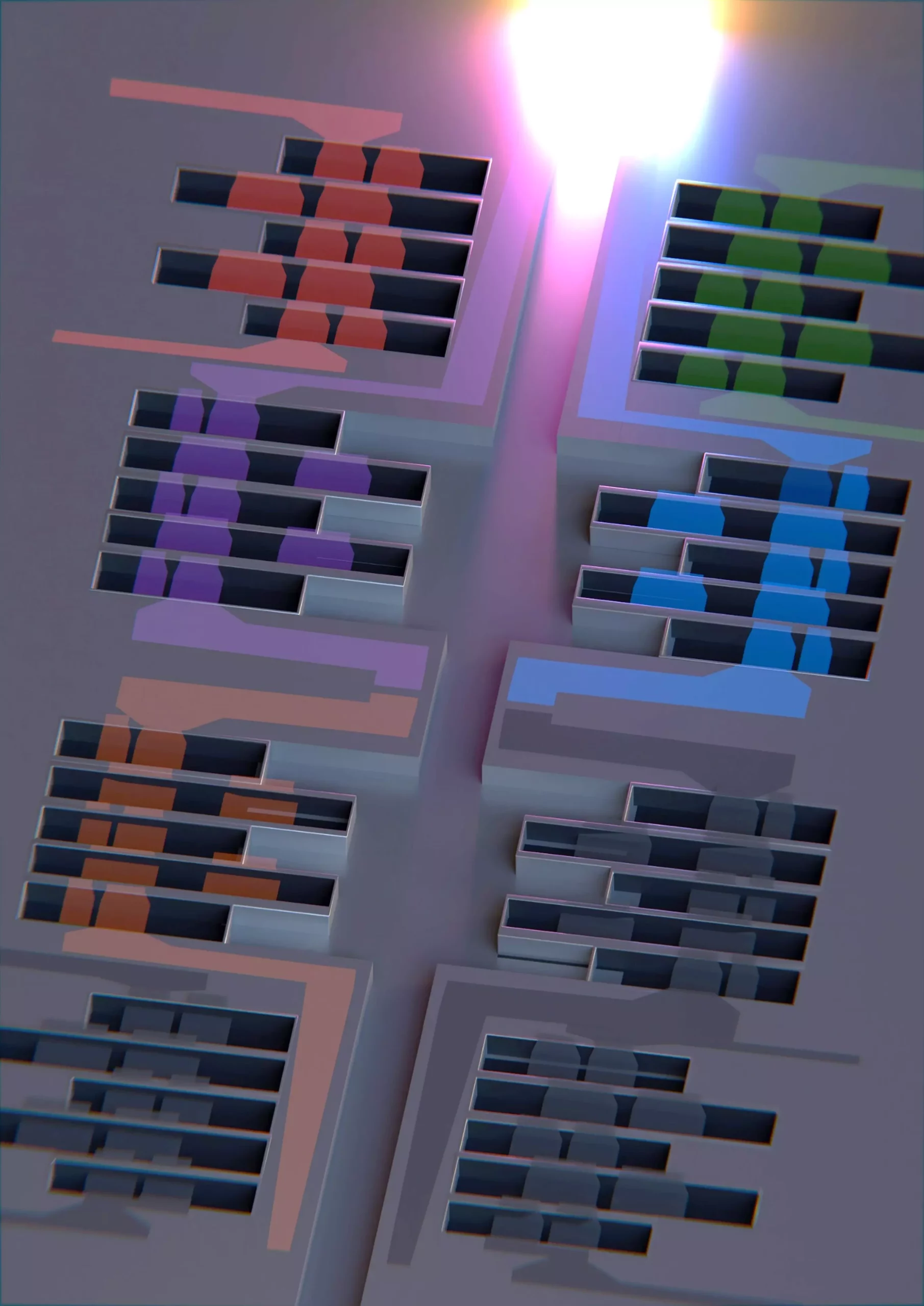In a groundbreaking development, scientists at the University of Florida have introduced a revolutionary method utilizing semiconductor technology to manufacture processors that will greatly enhance the efficiency of data transmission globally. This innovation, highlighted on the cover of the prestigious journal Nature Electronics, is set to dramatically impact wireless communication, especially in a time when the demand for data transmission is exponentially rising due to advances in artificial intelligence (AI).
Traditionally, wireless communication has heavily relied on planar processors, which, though effective, are constrained by their two-dimensional structure to operate within a fixed portion of the electromagnetic spectrum. This limitation has hindered the capacity for seamless data transmission, especially as the volume of data being transferred continues to increase. The need for a more advanced and efficient solution to tackle this growing demand has never been more pressing.
The Transformation to Three-Dimensional Processors
The research team at the University of Florida, led by Dr. Roozbeh Tabrizian, has successfully transitioned from planar processors to three-dimensional processors. This transition ushers in a new era of compactness and efficiency in data transmission, as well as a significant expansion of the electromagnetic spectrum that can be utilized. The development of three-dimensional processors has opened up new possibilities for wireless communication, paving the way for advancements in smart cities, remote healthcare, and augmented reality.
Challenges in Data Transmission
With the increase in AI technologies and autonomous devices, the demand for efficient data transmission has grown exponentially. The conventional planar processors are no longer adequate to meet these demands, as they restrict the range of frequencies that can be utilized efficiently. This has led to congestion and inefficiencies in data transmission, akin to a city with limited traffic infrastructure trying to accommodate a growing number of vehicles.
To address these challenges, the researchers at the Herbert Wertheim College of Engineering are employing CMOS (complementary metal-oxide-semiconductor) technology to construct three-dimensional nanomechanical resonators. By leveraging semiconductor technology in integration, routing, and packaging, the team has been able to incorporate multiple frequency-dependent processors on a single chip. This breakthrough allows for greater efficiency, enhanced performance, and the ability to adapt to evolving demands seamlessly.
The advent of three-dimensional processors marks a significant milestone in the field of wireless communication. These processors occupy less physical space, offer improved performance, and have indefinite scalability to accommodate future demands. The integration of different frequencies on a single chip is a game-changer, according to David Arnold, an associate chair for faculty affairs in the Department of Electrical and Computer Engineering. This innovation not only addresses manufacturing challenges but also enables the envisioning of new communication strategies in a congested wireless world.
The team of researchers, consisting of Dr. Tabrizian, Faysal Hakim, Nicholas Rudawski, and Troy Tharpe, embarked on this groundbreaking project in 2019. The successful development and implementation of three-dimensional processors have the potential to revolutionize the landscape of wireless communication, allowing for more efficient, faster, and secure data transmission across the globe. This transformative technology will undoubtedly lead to exciting advancements in various fields, propelling us into a future where seamless connectivity and real-time data exchange are the norm.


Leave a Reply